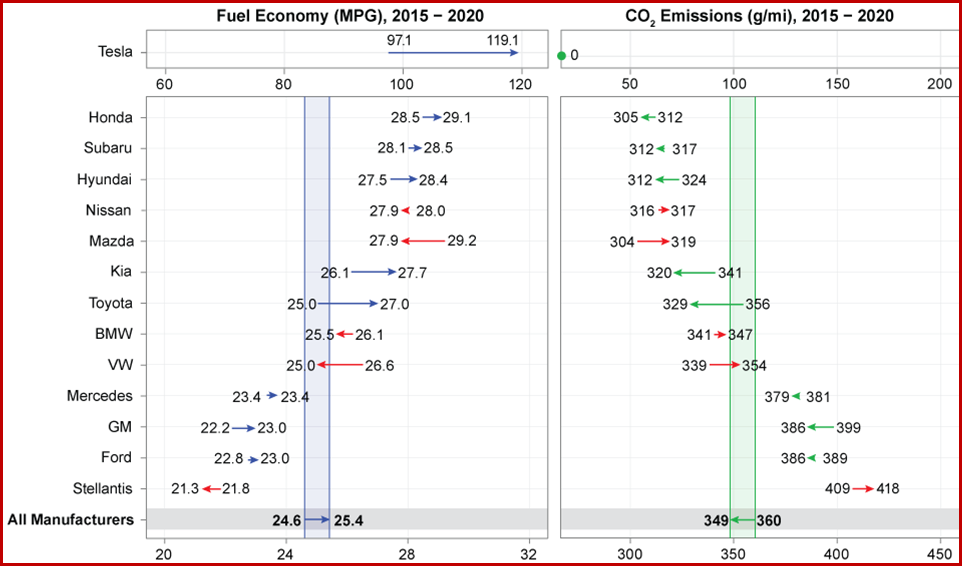Five manufacturers increased new vehicle CO2 emission rates between model years 2015 and 2020. Volkswagen and Mazda tied for the largest increase at 15 g/mi. Volkswagen achieved reductions in CO2 emissions in both sedan/wagon and truck SUVs vehicle types; however, that was more than offset by a reduction in their production share of sedan/wagons, from 79% to 40%, and a corresponding increase in truck SUVs from 19% to 58%. Mazda had similar trends, as a drop in sedan/wagon production share from 57% to 24%, a corresponding increase in car and truck SUV production share, and an increase in sedan/wagon CO2 emissions offset reductions in CO2 emissions from both car SUVs and truck SUVs.
Over the last five years, eight of the fourteen largest manufacturers selling vehicles in the U.S. decreased new vehicle estimated real-world CO2 emission rates. Tesla was unchanged because their all-electric fleet produces no tailpipe CO2 emissions. Between model years 2015 and 2020, Toyota achieved the largest reduction in CO2 emissions, at 27 g/mi. Toyota decreased emissions in all vehicle types, and their mix of vehicle types produced in model years 2015 and 2020 was similar. Kia achieved the second largest reduction in overall CO2 tailpipe emissions, even as their production share of more efficient sedan/wagons fell from 75% to 53%, and less efficient truck SUVs increased from 3% to 36% of all production. GM had the third largest reduction in overall CO2 tailpipe emissions, while their production share of sedan/wagons fell from 31% to 13% and truck SUVs increased from 28% to 39% of all production.
Five manufacturers increased new vehicle CO2 emission rates between model years 2015 and 2020. Volkswagen and Mazda tied for the largest increase at 15 g/mi. Volkswagen achieved reductions in CO2 emissions in both sedan/wagon and truck SUVs vehicle types; however, that was more than offset by a reduction in their production share of sedan/wagons, from 79% to 40%, and a corresponding increase in truck SUVs from 19% to 58%. Mazda had similar trends, as a drop in sedan/wagon production share from 57% to 24%, a corresponding increase in car and truck SUV production share, and an increase in sedan/wagon CO2 emissions offset reductions in CO2 emissions from both car SUVs and truck SUVs.


